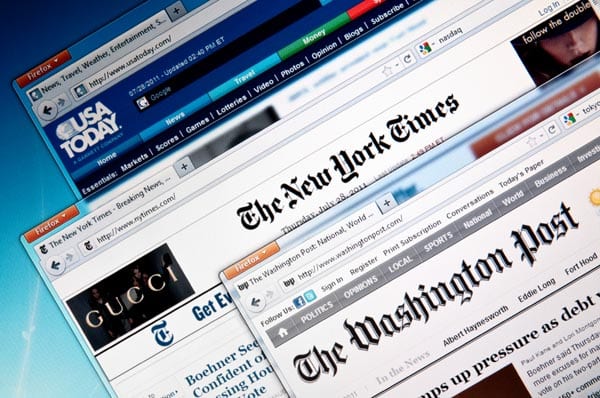Some Ideas on Popular News You Need To Know
Some Ideas on Popular News You Need To Know
Blog Article
Popular News Can Be Fun For Anyone
Table of ContentsNot known Details About Popular News 7 Simple Techniques For Popular NewsLittle Known Facts About Popular News.Fascination About Popular News
Age is likewise a factor in the method people view the role of social media sites. Younger social media sites information customers are more most likely to claim it has influenced their knowing right. Concerning fifty percent of social networks information consumers ages 18 to 29 (48%) say news on social media sites makes them much better educated, compared with 37% of those 30 to 49, 28% of those 50 to 64, and 27% of those 65 and older.Journalists evaluate news values when establishing whether or not to cover an event or news. Right here are the worths that we consider when developing an outreach strategy. Perhaps the most important component of newsworthiness is whether or not the information product being interacted effects an information electrical outlet's target market. As an example, allow's think of scientists have discovered a cost-effective remedy to a common trouble.
Study on a state's brand-new tax code most likely won't generate the exact same rate of interest across state boundaries. Periodically experts can help localize a bigger national tale that influences more than simply a city or state.
If you are releasing newsworthy research study, loophole in MarComm before the post being released to make sure that the pitch can emphasize the most recent element of the tale: the publication of the research study. Occasions and news that include high-profile numbers are more likely to produce media coverage. Check outs from national figures often call for months of preparation because of expected neighborhood rate of interest.
The 20-Second Trick For Popular News
We can help reduce possible reputational risk with these stories while additionally raising the chances of creating coverage. While numerous of the above news worths are interwoven, human rate of interest tales frequently stand apart.
Human rate of interest aspects can include information value to various other tales that might seem doing not have in the other worths. The uniqueness or strangeness of a scenario can assist influence whether or not an information outlet is most likely to cover a story. While this is not an exhaustive listing, checking to see if your information thing or event has these high qualities prior to contacting us will assist you establish which elements hold the most information worth.

Popular News for Beginners
There is also significant evidence that even more consumers can begin to spend for news in the futureif publishers can comprehend them and offer them well. Fifty percent of those that do not spend for news actively look for information and look like subscribers in numerous ways. And virtually Full Article 2 in 10 of those who do not sign up for information now show they are inclined to begin to pay in the future.
We after that ask a set of questions to establish whether individuals pay for particular sorts of information resources (Popular News). We asked people to name the resources they use most oftenwhether they spend for them or nothow they use them, the certain points they think about vital regarding them, and some relevant questions regarding the price and value of that resource
Individuals are drawn to news generally for 2 factors over others: A desire to be informed residents (paper subscribers in specific are highly encouraged by this) and due to the fact that the publication they register for excels at covering specific subjects about which those subscribers specifically care. While there are a host of factors, the No.
Greater than 4 in 10 additionally mention the reality that loved ones register for the very same product (Popular News). Greater than a third of individuals state they initially subscribed in feedback to a discount rate or promo. In print, people additionally are moved greatly to sign up for obtain vouchers that conserve them money, something that has untapped effects in digital
Little Known Facts About Popular News.
About half are "news applicants," suggesting they actively seek out information instead of primarily encountering it in a more passive method, though the news that nonpayers are seeking (in the meantime, at the very least) is usually about national politics. Like customers, a lot of these people also get news numerous times a day, utilize the news in means comparable to subscribers, and have an interest in comparable topics, including international or worldwide information.

Of those that do pay, 54 percent sign up for papers in print or digitally, which stands for 29 percent of Americans overall. A lot of them buy a print publication together with their newspaper and pay for 2 to content four news sources in overall, some also a lot more. And while 53 percent are veteran customers (5+ years), even more than a quarter (27 percent) have bought their paper membership within the previous year.
Few print customers assume it likely they will certainly change to a digital-only registration in the future, and over half of those that choose digital have never ever spent for a print variation of the exact same resource. Fully 75 percent of paper payers claim they mostly checked out the paper in print, while 21 percent are mostly electronic customers, and 4 percent describe themselves as uniformly divided.
Report this page